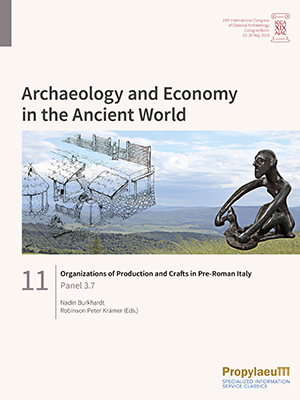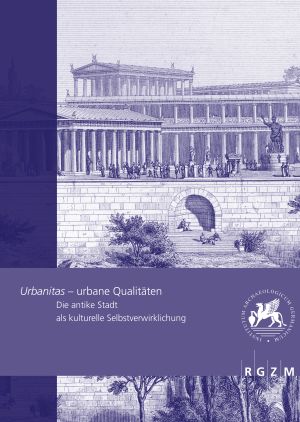Burkhardt, Nadin
Organizations of Production and Crafts in Pre-Roman Italy: Panel 3.7
While economic approaches are becoming generally more important and even mainstream topics, this is not necessarily the case for research into Pre-Roman Italy, defined as the area of the Italian Peninsula, Sicily and Sardinia during the Iron Age. Until recently, there was almost no research into Pre-Roman Italy focused on economic studies, and the existing research has been mostly dedicated to very specific contexts:
(1) specialization of crafts and production in the context of urbanization processes; (2) specific production areas, such as agriculture, metal processing, and salt production; (3) studies focusing on Greek Colonies and Greek Colonial encounters with indigenous populations; (4) analyses of consumption patterns, mainly in the case of Greek pottery consumption. Recent excavations and investigations devoted to the study of workshop structures, such as those at Gabii, Pithekoussai, Kroton, Lokroi Epizephyrioi, Naxos, Selinunt and Kyme / Cumae, have provided a range of new data that is stimulating a valuable and highly constructive discussion on the organization of production and crafts in Pre-Roman Italy. Against this background, four members of the study group ‘Etruscans and Italic Cultures’ from the ‘German Association of Archaeologists’ (Arbeitsgemeinschaft Etrusker und Italiker des DArV e.V.) formed a panel to discuss the economic aspects of Pre-Roman Italy on the basis of their ongoing research projects: all of these focus on the field of production and crafts. The aim is to contribute to an intensified debate on geographical, chronological and functional patterns in the organization of crafts and productions by discussing current case studies and methods.
Urbanitas – urbane Qualitäten: Die antike Stadt als kulturelle Selbstverwirklichung
The sheer unimaginable number of ancient towns allows no doubt about where life in the Classical world pulsated. What exactly the huge attraction of the towns comprised, however, can only be guessed at in the wake of the few comments in the literary sources: Apart from the varied entertainments on offer which the towns could provide, there is always mention of sophistication, whether in the social network or in the design of the material world. But how do such facets of urban culture also reveal themselves archaeologically? The conference proceedings address the question of ancient urbanitas exemplarily from various directions: On the one hand attention is placed on all those architecturally distinguishable installations which allow the recognition of a refined life beyond the economic criteria of utility. On the other hand it is highlighted with which methods towns procured a distinct self-consciousness, which testifies to pride, the desire for prestige and an enduring sense of togetherness. Finally, it also concerns the very simple question of what in the eyes of ancient people makes the town a town. Which urban qualities have to be achieved, so that a local community could claim to be on a par with other towns? The papers collated here, which deal not only with the large centres, but also with towns of various sizes up to the periphery of the Mediterranean world during the time-span of the 7th century B.C. until Late Antiquity, provide different answers. Certainly, there are recognizable patterns and obligatory ideas of standards, but to no lesser extent idiosyncratic solutions and special paths, thanks to which the towns could create a particular image.
Translation: C. Bridger








